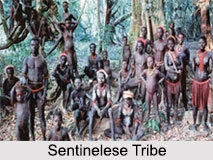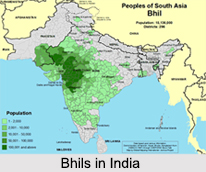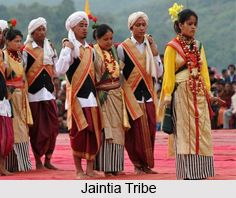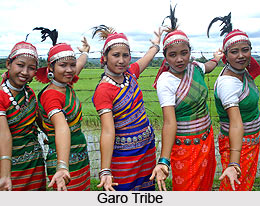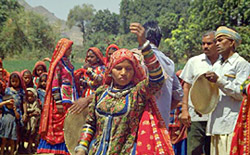Kisan tribes of Bihar are also reckoned by the name of Nagasia and are one of the many scheduled tribes who live different parts of Orissa and Bihar. Anthropologists have also opined that Kisan tribes have originated from the lineage of Orean tribal community. Apart from these areas, they are also scattered in some hilly and forest regions of Palamu District of Jharkhand. The Kisans are not distributes among clans but the society is divided into Sinduria and Telia sections. Besides, the Kisan tribes are also concentrated in the districts of Gumla, Garhawa, Singhbhum, Dhanbad, Hazaribag, Latehar, Lohardaga, Ranchi and Santhal Pargana in Jharkhand state. Kisan Tribes are also settled in different parts of Sambalpur, Mayurbhanj, Sundergarh and Keonjhar in Orissa. The Kisan tribes live in their villages among which Kutra is well recognized for Kisan settlements. The houses of the Kisans are made of perdurable materials and each of the houses contains a store room, a store room, workshop, a kitchen, a store room and a veranda. As the Kisans are the agrarian people, they possess agricultural weapons, cattle wealth and household utensils. Among the people of this community, some have their own land and some cultivate in other`s lands. Kurathi, marua, paddy and different vegetables are cultivated by the Kisans.
The language the Kisan tribes speak is called Sadani language though their native language is Mundari language. They are also well conversant in Oriya and Hindi language. They live on collecting forest products and cultivating lands. Cultivation is the major occupation of this tribal community as the etymological meaning of the community signifies a Kisan is someone who does the work of cultivation. There are quite a few Kisan tribes who also have excelled in the profession of food gathering. The people of this community are adept in creating different articles like brooms, ropes, baskets, winnowing tray and mats with local grasses, bamboo and dry leaves. Apart from cultivating lands, the Kisans are also engaged in the works of labourers and coolie.
What is interesting to note is that these Kisan tribes shared a good rapport with other tribes, namely, Oram, Gond etc. who live in close proximity Cultural exuberance of these Kisan tribes is properly being highlighted in the heritage of singing and dancing forms. Endogamy and exogamy are practiced in their society. The male costumes of the Kisan tribes include kurta, dhoti, ganji, gamachha etc. and the women of this community wear saree with blouse. Several ornaments made of lac, glass, silver and steel threads are in use among the women of the community. Earlier, the Kisan tribes used to bring their dresses from another community named Chickbaraik tribe but now they buy their dresses from their local `Haat`.
This tribal community follows Hinduism and also worships some of the Hindu gods and goddesses. The Kisans worship several local and tribal gods and goddesses. They also worship the natural objects which, they consider, have religious value. They worship Dharati Mata (Mother Earth), Brahma Devata, Singbonga, Gram Devata (village god), goddess Durga, goddess Kali, Mati and Sokha. Sometimes sacrifices of animals are made by them to appease their gods. Moreover, the Kisan tribes enjoy the celebrations of different local, tribal and religious festivals. With tribal songs and dances, they celebrate Karma, Jitia, Diwali, Sohrai, Maghi, Phagun, Sarhul, etc.

















